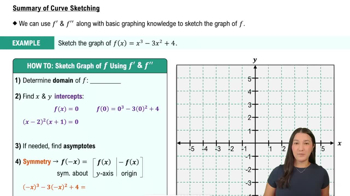13-26 Implicit differentiation Carry out the following steps.
b. Find the slope of the curve at the given point.
(x+y)^2/3=y; (4, 4)
 Verified step by step guidance
Verified step by step guidance Verified video answer for a similar problem:
Verified video answer for a similar problem:



 5:14m
5:14mMaster Finding The Implicit Derivative with a bite sized video explanation from Patrick
Start learning